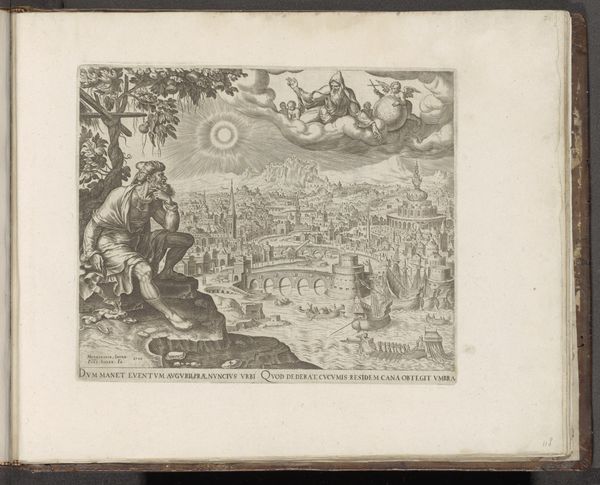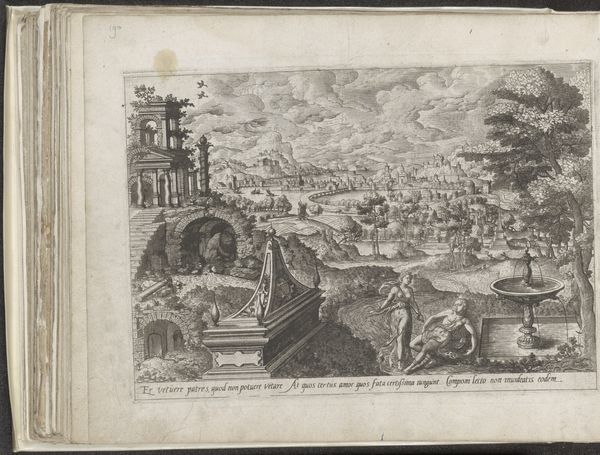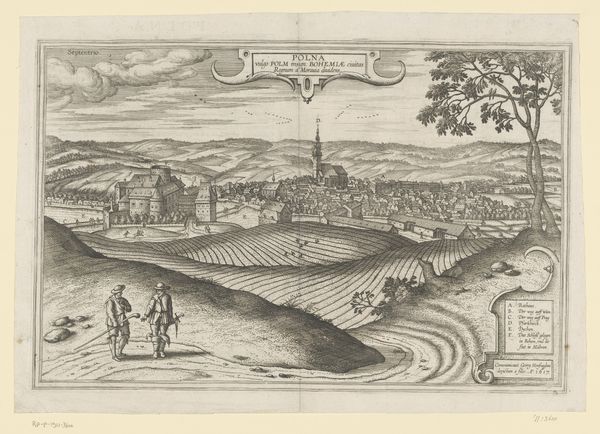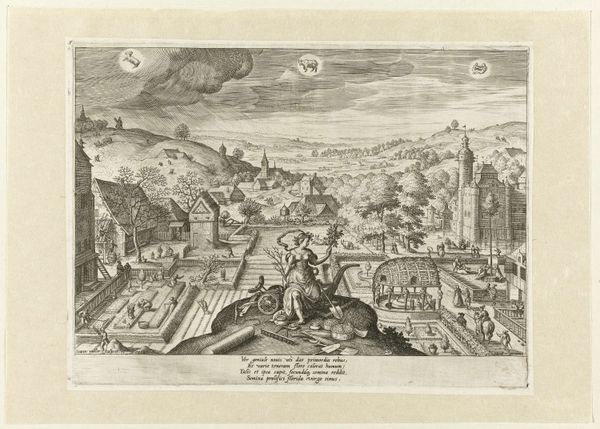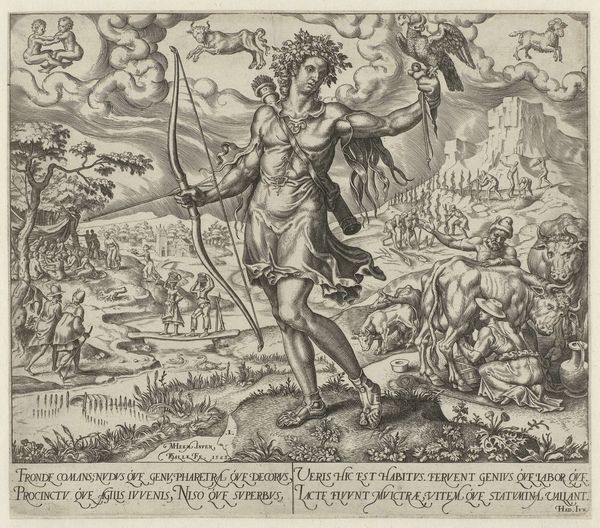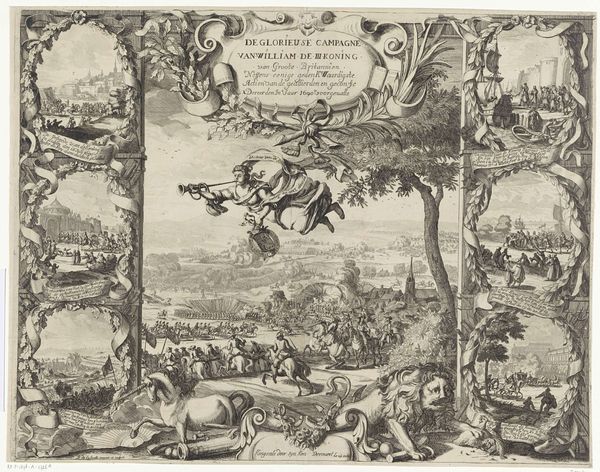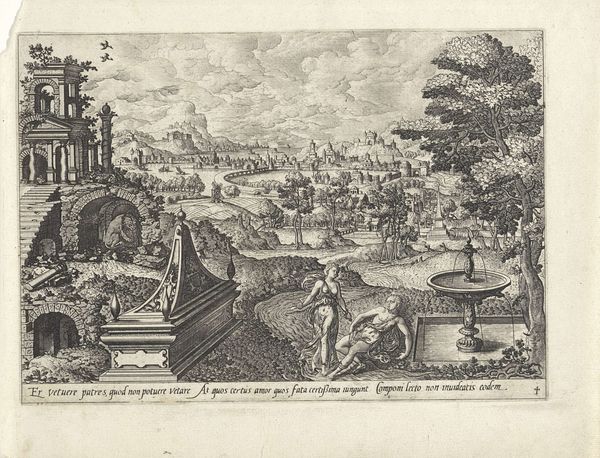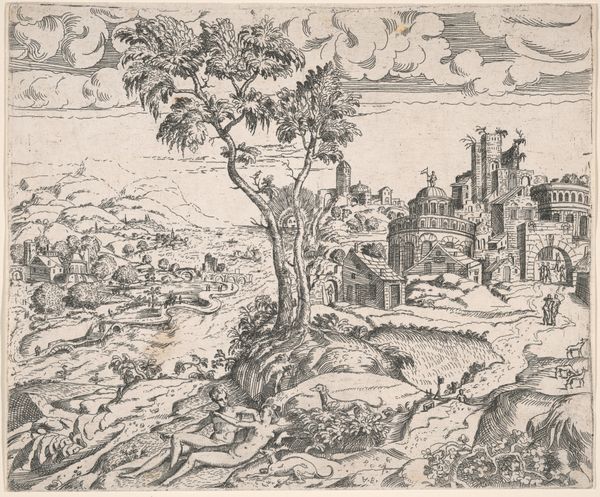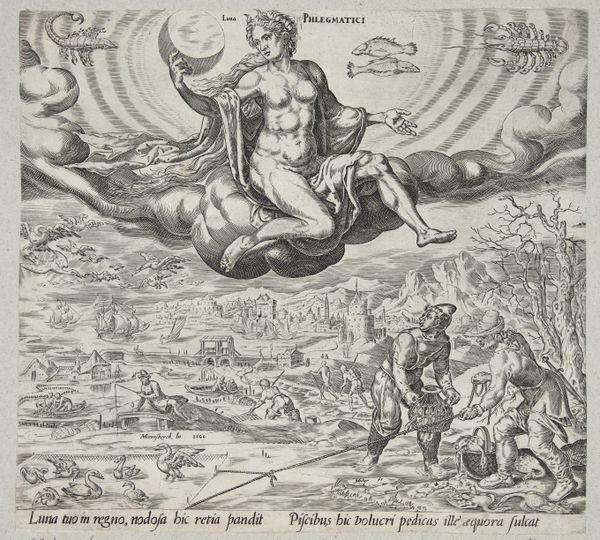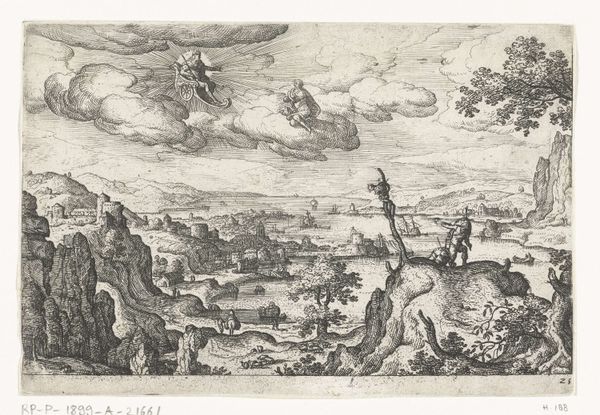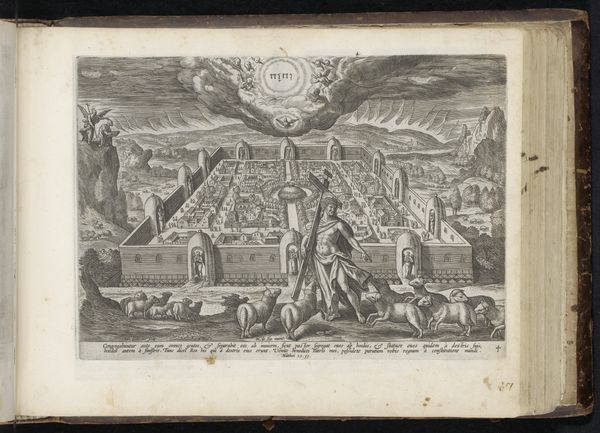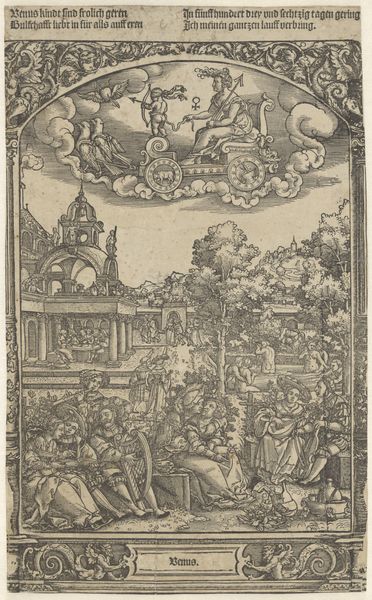
Dimensions: 230 mm (height) x 270 mm (width) (monteringsmaal), 206 mm (height) x 249 mm (width) (plademaal)
Curator: Here we have Philips Galle’s 1566 engraving, "Jonah complaining under the gourd." The figure is compelling; what strikes you most about this piece? Editor: Well, initially, it's the contrast between Jonah's dark mood in the foreground and the vibrant, detailed cityscape stretching behind him. What is interesting, is that a Renaissance artist engraves something based in the Old Testament and that his style reminds us so much of landscapes later known to the Baroque. How do you see the role of religious art within the context of its contemporary society? Curator: It is essential to note how artists used biblical narratives to explore contemporary social and political concerns. Consider how the story of Jonah, a prophet reluctant to deliver God’s message, might resonate within a 16th-century audience grappling with religious reform, urban growth, and the relationship between divine will and human action. Look at that meticulously rendered city! Galle’s choice to depict an urban landscape—perhaps a reflection of Antwerp itself—alongside the allegorical figure of Jonah makes a profound comment. Do you notice the inscription beneath the image? Editor: I do. “As long as the outcome of the prophecy lasts, the grey shade covers the dwelling that the gourd has given to the city." That is very evocative and melancholic, as the shade suggests temporary shelter. What is also curious to me, is God, looking down at Jonah on a cloud, but also on the city! Curator: Yes! The placement of God watching both Jonah and the city underscores the divine surveillance and the accountability of human actions. How might this influence the viewer’s interpretation of civic duty? Editor: It reframes individual emotions within the larger scope of collective responsibility, creating tension that urges reflection of one’s action in regard to society. The image, once viewed as solely religious, actually serves as a commentary on society and morality! Curator: Exactly! Galle effectively utilizes religious narratives as a mirror to his society, which challenges viewers to consider the public role of art. It moves beyond religious storytelling into something profoundly sociopolitical. Editor: I see that now; the city becomes just as critical a character as Jonah himself. Thanks for illuminating that connection!
Comments
No comments
Be the first to comment and join the conversation on the ultimate creative platform.

